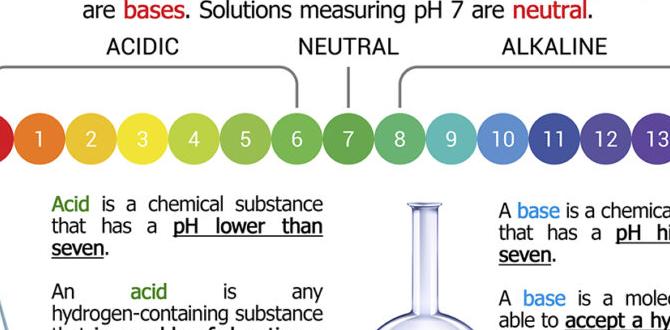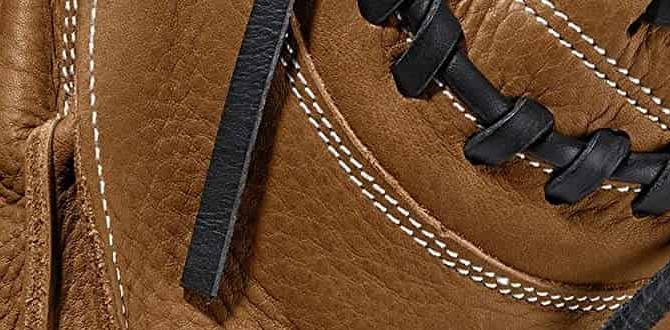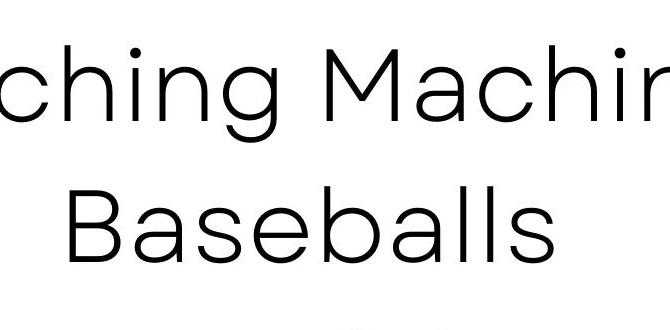Easton catchers shin guards offer excellent protection and comfort for high school players, balancing durability with flexibility to enhance performance and safety behind the plate.
Playing catcher is tough! You’re the unsung hero, blocking pitches and keeping the game together. But that also means taking some direct hits. Shin guards are super important to keep your legs safe. It can be tricky to pick the right pair, especially with so many choices out there. We’re here to help you find the best Easton shin guards for high school, so you can focus on making game-saving plays, not worrying about bruises.
Why Easton is a Top Choice for Catcher’s Shin Guards
When it comes to baseball gear, Easton is a name that consistently pops up. They’ve been making quality equipment for a long time, and their catcher’s gear is no exception. For high school players, needing gear that’s tough enough for intense games but also comfortable enough for long practices is key. Easton understands this balance. They use smart designs and good materials to make sure their shin guards protect you well without getting in the way of your movement.
Think about it: as a catcher, you’re down in a squat for most of the game. Your shin guards need to be snug, not too heavy, and offer solid protection against foul tips and errant pitches. Easton’s commitment to innovation means they’re always looking for ways to improve their gear, making it lighter, stronger, and more protective. This dedication makes their shin guards a fantastic option for any high school catcher aiming to perform at their best.
Understanding Catcher’s Shin Guard Features: What to Look For
Picking out catcher’s shin guards might seem simple, but there’s more to it than just grabbing a pair off the shelf. For high school players, getting shin guards that fit right and offer the protection you need is crucial. Let’s break down the key features to consider:
Protection Levels
Shin guards are all about safety. High school baseball can be fast-paced, and foul balls happen. You’ll want guards with good padding, especially around the shin and knee. Look for designs that offer full leg coverage, from just below the knee down to the ankle. The materials should be tough enough to absorb impact. Easton often uses high-density plastics and thick foam padding to create a strong barrier.
Fit and Comfort
This is huge! If your shin guards don’t fit well, they can be uncomfortable, fall out of place, or even restrict your movement. Look for adjustable straps that let you get a secure, custom fit. The padding should feel comfortable against your legs, even after hours of wear. Some shin guards have a hinged design that allows for better flexibility when you’re moving around the plate. A good fit means you can focus on the game.
Durability and Materials
High school sports can be rough on equipment. Your shin guards will take a beating, so they need to be built to last. Easton typically uses strong, impact-resistant plastics for the outer shell and high-quality foam for the interior padding. Check the stitching and strap materials, too. While lightweight is good, you don’t want to sacrifice durability. Gear that lasts longer means better value for your money.
Breathability
You’ll be sweating behind the plate, especially in warmer weather. Shin guards that don’t breathe can get uncomfortable and lead to chafed skin. Many modern shin guards, including some Easton models, incorporate ventilation channels or breathable materials to help keep your legs cooler and drier. This might not seem like the most important feature initially, but it can make a big difference over a long season.
Weight
While protection is paramount, you also don’t want shin guards that weigh you down. Lighter guards can help you feel quicker and more agile. Easton often tries to find a sweet spot between robust protection and manageable weight, which is ideal for high school players who are still developing their strength and speed.
Top Easton Catcher’s Shin Guard Models for High School
Easton offers a range of shin guards, and a few models consistently stand out for high school catchers. They’re designed with the player in mind, offering a great mix of protection, comfort, and performance. Here are some of the best ones you might encounter:
Easton Pro-X Catcher’s Shin Guards
The Easton Pro-X line is generally considered a premium option. These shin guards are built for serious players who demand top-tier protection and features. They often boast:
- Superior Impact Protection: Constructed with advanced materials designed to absorb and dissipate force from hard impacts, including reinforced knee and shin areas.
- Ergonomic Design: Engineered for a natural fit that moves with your body, allowing for a full range of motion when blocking and throwing.
- Advanced Strapping System: Multiple adjustable straps ensure a secure, customized fit that stays in place, no matter how intense the game gets.
- Ventilation: Features designed to promote airflow and reduce heat buildup, keeping you more comfortable during long games and practices.
- Durable Construction: Built with high-quality components that can withstand the rigors of a high school baseball season.
Easton Game-Day Catcher’s Shin Guards
The Game-Day series is often positioned as a great all-around option, balancing performance with value. These shin guards are fantastic for high school players looking for reliable protection without breaking the bank. Key features typically include:
- Solid Protection: Offers robust coverage for the shin and knee areas, effectively protecting against foul tips and impacts.
- Comfortable Fit: Designed for good comfort with adequate padding and a system of adjustable straps to keep them snug.
- Good Value: Provides a great combination of durability and protective features at a more accessible price point than some higher-end models.
- Lightweight Feel: Often designed to be relatively lightweight, helping players maintain agility.
Easton Youth/Intermediate Catcher’s Shin Guards (for smaller high school players or serious younger players)
While often marketed as youth or intermediate, these can be excellent for smaller or lighter-framed high school players who need a slightly less bulky option but still require quality protection. They often share:
- Proportional Sizing: Designed to offer excellent protection in sizes that might be more manageable for younger or smaller athletes.
- Effective Padding: Still provides good impact absorption for the shins and knees.
- Adjustable Straps: Ensuring a secure fit is a priority across all Easton models.
- Focus on Mobility: These younger geared models often prioritize ease of movement.
When choosing, always try to check the sizing charts provided by Easton. A properly sized shin guard is essential for both safety and comfort on the field. For high school players, the Pro-X and Game-Day lines are usually the go-to, offering a solid range of protection and features suited for competitive play.
How to Properly Size and Fit Easton Catcher’s Shin Guards
Getting the right fit for your Easton catcher’s shin guards is super important. It’s not just about comfort; it’s about making sure they protect you effectively without restricting your ability to play. Here’s a simple guide:
Step 1: Measure Your Leg
You’ll need two key measurements: the length of your shin, from the middle of your kneecap down to where you want the shin guard to end (usually just above the shoe), and the circumference of your calf. Use a soft measuring tape for accuracy. Compare these measurements to Easton’s sizing chart for the specific model you’re interested in. Most charts will list recommended lengths for different sizes (e.g., 14-inch, 15-inch, 17-inch).
Step 2: Consider Your Position and Play Style
Are you a catcher who’s constantly blocking pitches in the dirt, or do you tend to stay more upright? If you’re blocking a lot, you might want shin guards that extend a little lower and offer a bit more coverage. However, be mindful that longer guards can sometimes feel bulkier. The right length should provide coverage without interfering with your footwork or your ability to frame pitches.
Step 3: Try Them On (If Possible)
The best way to ensure a good fit is to try them on. Put them on over your baseball pants. They should feel snug, not tight. The knee piece should sit comfortably over the top of your knee, offering protection but not digging in. The shin portion should cover your shin adequately, and the ankle piece should rest just above your shoe. Perform a few movements – squatting, standing, taking a step – to see how they feel. Do they shift? Do they pinch anywhere? Do they restrict your movement?
Step 4: Adjust the Straps
Once you’ve got them on, use the adjustable straps to secure them. Start with the top straps, then the middle, and finally the bottom straps. They should be tight enough so the shin guards don’t slide down but not so tight that they cut off circulation or cause discomfort. You should be able to slide a finger between the strap and your leg. Ensure the straps themselves are tucked away or secured so they don’t get caught on anything.
Step 5: Check for Gaps and Rubbing
Look closely for any large gaps where your leg might be exposed. Also, pay attention to any areas where the shin guard might rub against your skin or socks. If you notice any discomfort or excessive rubbing, try adjusting the straps differently or consider if the size is truly right for you. Easton often uses comfortable inner padding, but a poor fit can still cause issues.
Remember, your shin guards should feel like a second skin – protective and supportive, but practically unnoticeable when you’re playing. A well-fitted pair of Easton shin guards will boost your confidence and keep you focused on your game.
Easton Shin Guards vs. Competitors: A High School Perspective
Choosing the right gear can feel overwhelming, especially when you see so many brands. Easton is a big player, but how do they stack up against other popular brands for high school catcher’s shin guards? Let’s look at some common comparisons:
| Feature | Easton | Brand X (e.g., Wilson, All-Star) | Brand Y (e.g., Mizuno, Shock Doctor) |
|---|---|---|---|
| Protection Level | Generally offers excellent, well-distributed impact protection with good coverage. Often praised for the strength of their plastic molds and padding density. | Varies by model, but often features strong protection, especially in their higher-end lines. Some models might focus more on specific areas like the knee. | Known for innovative designs, often with good protection. Some might offer advanced padding technologies. |
| Fit & Comfort | Typically features well-designed adjustable strapping systems and ergonomic shapes for a comfortable, secure fit. Good ventilation is often considered. | Comfort is usually a high priority, with many brands offering ergonomic designs and padded interiors. Strapping can vary in effectiveness. | Comfort is key; brands like Mizuno are known for comfortable internal padding and well-thought-out strap placement. |
| Durability | Easton is known for robust construction and durable materials that hold up well to the demands of a season. | Durability is generally good across major brands. Higher-end models usually offer longer-lasting performance. | Good durability, especially in their baseball-specific lines. Some materials might be lighter but equally resilient. |
| Weight | Often strikes a good balance between protection and weight, aiming for players who need solid defense without feeling weighed down. | Competitors also focus on managing weight, with some models being exceptionally light while others prioritize bulkier protection. | Some brands may focus on very lightweight designs, which can be appealing but might compromise on extreme durability for some. |
| Price Point | Offers a range from mid-tier to premium, generally providing good value for the quality. | Similar range, with significant variation based on the specific model and brand positioning. | Often competitive, with models that fit various budget needs. |
| Key Strengths for HS | Reliable, balanced protection; good fit system; durable construction. Great all-around performers. | Can offer specialized features; strong brand recognition; wide variety of options. | Innovative padding or designs; focus on mobility; often lightweight. |
For high school catchers, Easton’s strengths lie in their consistent quality and balanced approach. They’re not always the absolute lightest, nor are they always the most feature-packed at the very highest end compared to some niche brands, but they reliably deliver solid protection, good comfort, and durability. This makes them a safe and effective choice for most high school players.
Ultimately, the “best” shin guards are the ones that fit you perfectly and make you feel confident and protected on the field. While Easton is a stellar option, it’s always a good idea to try on gear from a few different reputable brands if you have the chance. Brands like Wilson, All-Star, and Mizuno also produce excellent catcher’s gear that high schoolers can rely on.
Tips for Extending the Life of Your Easton Shin Guards
Your Easton shin guards are an investment in your safety and performance. To make sure they last as long as possible throughout your high school career and beyond, a little care goes a long way. Here are some practical tips:
Clean Them Regularly
After practices and games, wipe down the exterior of your shin guards with a damp cloth to remove dirt, mud, and sweat. This prevents grime from building up and potentially damaging the materials. For deeper cleaning, you can use a mild soap solution, but always rinse thoroughly and let them air dry completely. Avoid harsh chemicals or abrasive cleaners, as they can degrade the plastic and padding.
Dry Them Properly
Never store your shin guards while they are still wet or damp. Moisture can lead to material breakdown, odor development, and even mold or mildew. After cleaning or getting them wet from sweat, stuff them with newspaper or place them in a well-ventilated area to dry out completely. Don’t put them in a dryer or near direct heat sources like radiators, as this can warp or melt the plastic.
Store Them Correctly
When you’re not using them, store your shin guards in a cool, dry place. Avoid leaving them in your sports bag for extended periods, especially if the bag is damp or in a hot car. If possible, store them loosely, not compressed under other heavy gear, to maintain their shape and prevent damage to the padding or straps.
Check for Wear and Tear
Periodically inspect your shin guards for any signs of damage. Look for cracks in the plastic, tears in the padding, or fraying on the straps. Make sure all buckles and Velcro closures are still functioning properly. Minor issues like loose stitching can often be repaired, but significant damage to the protective shell may mean it’s time for a replacement to ensure continued safety.
Use Them for Their Intended Purpose
Shin guards are designed for catching baseballs, not for activities like sliding into base (though they offer some protection) or for use in other sports. Using them outside of their intended purpose can lead to premature wear and tear or damage that compromises their protective capabilities.
By following these simple maintenance tips, you can significantly extend the lifespan of your Easton shin guards, ensuring they continue to provide reliable protection season after season. For more detailed care instructions, you can sometimes find specific guides on the Easton website or manufacturer recommendations.
Frequently Asked Questions (FAQs)
What’s the main benefit of using Easton shin guards?
Easton shin guards are designed to provide high-level protection from foul balls and impacts, helping to prevent leg injuries. They also offer a comfortable and secure fit crucial for a catcher’s movement and performance.
How do I know if Easton shin guards are the right size for my high school player?
Measure from the middle of the kneecap to the desired endpoint (usually top of the shoe) and compare to Easton’s sizing chart. It’s best to try them on if possible to ensure they fit snugly and comfortably without restricting movement.
Are Easton shin guards suitable for all high school catcher positions?
Yes, while they are designed for catchers, any player who feels they need extra shin protection (e.g., outfielders playing aggressively, pitchers who stand close to the plate for some plays) could potentially use them, though they are specifically engineered for the catcher’s stance and needs.
How do I clean my Easton catcher’s shin guards?
Wipe them down with a damp cloth and mild soap after use. Ensure they are thoroughly dried in a well-ventilated area before storing to prevent odor and material damage. Avoid harsh chemicals and direct heat.
Can I use youth shin guards if I’m a smaller high school player?
Yes, some smaller high school players might find that youth or intermediate-sized shin guards offer a better fit than standard adult sizes, provided they still offer adequate protection and coverage for their leg length.
How often should I replace my Easton shin guards?
Shin guards should be replaced when they show significant signs




